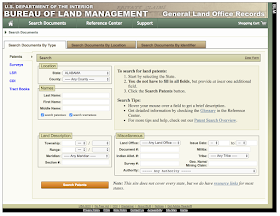 |
| HR 125, An Act to secure homesteads to actual settlers on the public domain, March 25, 1862, printed House bill with Senate amendments RG 46, Records of the U.S. Senate |
- 10 Percent of U.S. land given away under the Homestead Act.
- 30 Number of states in which homestead lands were located.
- 40 Percent of homesteaders that "proved up" their claims earned a deed from the federal government.
- 123 Years the Homestead Act was in effect.
- 160 Acres in a typical homestead claim.
- 4,000,000 Approximate number of claims made under the Homestead Act.
- 27,000,000 Total number of acres distributed by the Homestead Act.
 |
| https://www.nps.gov/home/learn/education/classrooms/hsact68post1.htm |
 |
| https://www.archives.gov/files/publications/prologue/2012/winter/homestead.pdf |
Donation Land Claims Act of 1850
The Donation Land Claim Act allowed settlers to claim land in the Oregon Territory, that included land in the modern states of Washington, Oregon, Idaho and parts of Wyoming. Settlers were allowed to claim 320 or 640 acres of land for free between 1850 and 1854, and then at a cost of $1.25 per acres until the law expired in 1855.
Homestead Act of 1862
The original homestead act that was motivated to move settlers into territory that the North wanted to preserve as "free states" starting during the Civil War. Quoting from the Wikipedia article:
The homestead was an area of public land in the West (usually 160 acres or 65 ha) granted to any US citizen willing to settle on and farm the land. The law (and those following it) required a three-step procedure: file an application, improve the land, and file for the patent (deed). Any citizen who had never taken up arms against the U.S. government (including freed slaves after the fourteenth amendment) and was at least 21 years old or the head of a household, could file an application to claim a federal land grant. Women were eligible. The occupant had to reside on the land for five years, and show evidence of having made improvements. The process had to be complete within seven years.Southern Homestead Act of 1866
Again a politically motivated act aimed at giving land to poor tenant and sharecropper farmers in the South. See Southern Homestead Act of 1866.
Timber Culture Act of 1873
The Act granted up to 160 acres of land to a homesteader who would plant at least 40 acres (revised to 10) of trees over a period of several years. This quarter-section could be added to an existing homestead claim, offering a total of 320 acres to a settler. This offered a cheap plot of land to homesteaders. See Wikipedia: Timber Culture Act.
Kinkaid Amendment of 1904
Quoting from Wikipedia:
Recognizing that the Sandhills (Nebraska) of north-central Nebraska, required more than 160 acres for a claimant to support a family, Congress passed the Kinkaid Act which granted larger homestead tracts, up to 640 acres, to homesteaders in Nebraska. See Kinkaid Act.Enlarged Homestead Act of 1909
the Enlarged Homestead Act was passed in 1909 to enable dryland farming. It increased the number of acres for a homestead to 320 acres of marginal lands (especially in the Great Plains), which could not be easily irrigated.
Stock-Raising Homestead Act of 1916
The Stock-Raising Homestead Act allocated settlers 640 acres for ranching purposes. See Stock-Raising Homestead Act.
Subsistence Homesteads provisions under the New Deal – 1930
Quoting from the Wikipedia article, "Subsistence Homesteads Division:"
The Subsistence Homesteads Division of the US Department of the Interior (DSH or SHD) was a New Deal agency that was intended to give safe residences to urban poor in small plots of land that would allow them to sustain themselves. Unlike subsistence farming, subsistence homesteading is based on a family member or members having part-time, paid employment.The Federal Land Policy and Management Act of 1976 ended homesteading;
The sales of public lands were conducted by the General Land Office or GLO. The Bureau of Land Management (BLM) has a website with the GLO records. See General Land Office Records.
 |
| https://glorecords.blm.gov/search/default.aspx |
Here are links to the previous Case Studies:
Case #1: https://genealogysstar.blogspot.com/2018/08/case-studies-in-american-migration-part.html
Case #2: https://genealogysstar.blogspot.com/2018/08/case-studies-in-american-migration-part_26.html
Case #3: https://genealogysstar.blogspot.com/2018/08/case-studies-in-american-migration-part_30.html
Case #4: https://genealogysstar.blogspot.com/2018/09/case-studies-in-american-migration-part.html

No comments:
Post a Comment